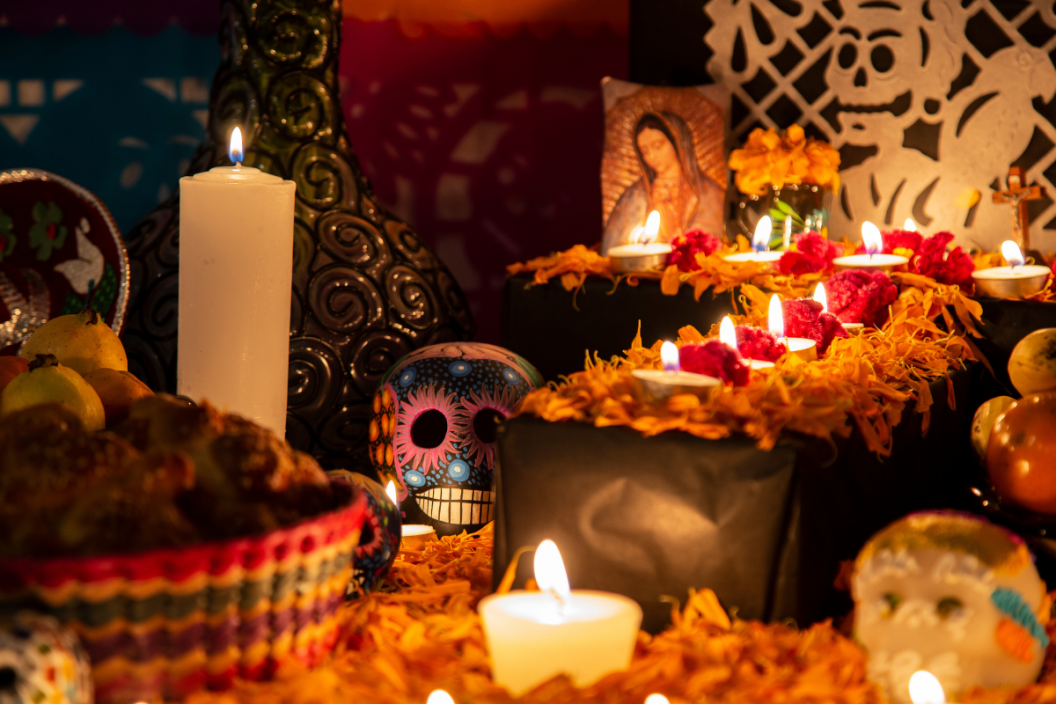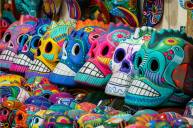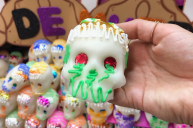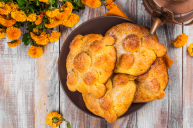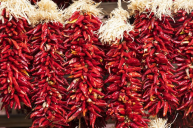The Day of the Dead, or Dia de los Muertos, is a Mexican holiday celebrating deceased loved ones with food, drinks and festivities. One of the biggest traditions of the holiday is making altars, or ofrendas, for the deceased family members. These ofrendas are made with care, and each element has its own meaning in welcoming back the souls of the deceased.
Videos by Wide Open Country
Every state in Mexico has its own style of ofrenda, but these altars most commonly have three levels to represent earth, heaven and the underworld. Some have up to seven levels, each with its own meaning. Here are the essential parts of a Day of the Dead ofrenda:
Picture of the Deceased
https://www.instagram.com/p/CHFQaRUgQdf/
A photo of the deceased that the Day of the Dead altar is honoring is an essential part of the altar. This is placed on the top or in the middle, and images of saints accompany it as a reminder of their role as the go-betweens among the living and the dead.
Water
Each of the four elements are part of an ofrenda, and the water is meant to quench the thirst of spirits who are journeying into the beyond. It also symbolizes the purity of the soul.
Food
Earth is represented by food, especially bread. The most common food used is pan de muerto, or bread of the dead. This pan dulce (sweet bread) is a round loaf sprinkled in white sugar. Along with being part of the ofrendas, it's enjoyed with coffee and hot chocolate around the time of Day of the Dead, which falls on Halloween. Along with this, there are typically fruits, dishes, tequila, mezcal, chocolate, and other foods that the departed enjoyed during life.
Papel Picado
Papel picado, or paper banners, are meant to represent the wind or air. These colorful tissue papers are cut in rectangles and hung from string above and around the altars. These are used for all fiestas and holidays in Mexico, adding a pop of color to any celebration
Candles
Candles are part of the altar as well, representing the element of fire. Cirios, the plain candles, are often placed the shape of a cross to represent the cardinal directions and help spirits to find their way on their journey. The other candles, Velas, are usually in a glass container with the picture of a saint, and they're meant to light the way for souls as they ascend.
Salt
Salt is another important element, and it's believed that it will prevent the body of the deceased from breaking down as it travels to eternity.
Marigolds
The bright yellow Mexican marigold, or Cempasuchil, is known as the flor de muerto, or flower of breath. These flowers can be found throughout gravesites and on altars. The Cempasuchil symbolizes the Aztec sun god, and its bright color and scent is believed to attract the sprits of the deceased. This flower is also said to guide the souls in staying on the path in the afterlife.
Skeletons and Skulls
There are a number of different skeletons and skulls placed on the ofrenda. The angelitos, meaning little angels, are little angel figurines symbolizing the children who have passed. There are also little calacas, meaning skeleton, a central part of the decorations throughout the holiday.
Another important figure is La Catrina, a female skeleton crated by illustrator José Guadalupe Posada. Although he originally created this as a social commentary, La Catrina has become a large part of Day of the Dead celebrations.
Sugar skulls, or Calaveras, are one of the most well-known symbols of the holiday. These little skulls made of sugar symbolize Miquiztli, the God of death, along with representing the holy Trinity. These often have the name of the deceased person on their foreheads.
The Cross
The Christian symbol of the cross represents the forgiveness of sins of the deceased.
Copal Incense
This special incense has a long history, and was burned in ancient times by the Aztecs and Mayans for ceremonies. Copalli incense's fragrance is said to purify the area, ridding it of evil spirits. Along with this, it's seen as a connection with the sky, and it's believed the the smoke makes a connection with the spirit world as it rises. Along with this, the distinctive fragrance of this incense is believed to attract the spirits to the ofrenda.
Tapete de Arena
This means "rug of sand" in Spanish, and it refers to a decoration made on the ground in front of an ofrenda. These can be made with many different materials, like flowers, dirt, beans, sawdust, and lentils. The decorations are sometimes made into religious scenes, but they're often simply a playful depiction of death.
Petate
A petate is a woven bedroll made of the petate palm, and family members place it in front of the altar as an area to pray or kneel while honoring their deceased loved ones.
